Interview: The #Sugarkills Gang
As regular readers of middle grades teacher Bill Ferriter‘s much admired blog The Tempered Radical, we’ve been following the adventures of his #SUGARKILLS Gang — a group of sixth grade science students who got passionately interested in the way sugary foods impact the American diet and psyche.
Through their use of a dedicated blog and the Twitter hashtag #sugarkills, the students have been pushing out information about the often shocking amounts of sugar found in a variety of popular food items. To further the cause of “real-world learning,” we asked Mr. Ferriter if we could interview the gang. Here’s what we found out.
1. What’s the story behind your #sugarkills project? Why do you think it is important?
About 4 months ago, our entire class was studying the New York City soda ban. We saw more and more statistics on how soda had a TON of sugar. A couple of weeks later, our science teacher, Mr. Ferriter, came up with the brilliant idea to share with people the amount of sugar in all kinds of foods.
That’s how #sugarkills was born.
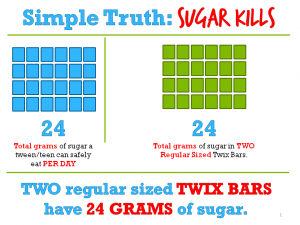
That led to more volunteers, more posts, more comments, and more subscribers. Now we want to keep the snowball rolling. We want to make a difference. We want to keep on caring.
2. Tell our readers about the research you’ve done – how did you do it? What did you find out?
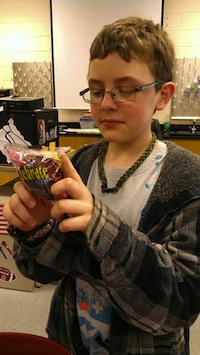
If we don’t have the packaging with us, we go online to the food’s brand’s website for nutrition facts. We then do a little more research on what we are interested in, and another fun food post is made. Also, the recent tweets and comments at our blog give us ideas of what to write about next.
Most of the foods that we write about are commonly eaten foods (Girl Scout cookies), surprisingly high-sugar foods (lite syrup), and just plain ridiculous foods (26-pound gummy pythons).
What we found during our research is scary. It is almost impossible to NOT go over the recommended daily maximum sugar intake (which is fancy talk for the amount of added sugar you can eat per day – 24 grams) in a single MEAL, let alone three.
We hope our website can help raise awareness about how much sugar is actually in foods.
3. Who is your primary audience?
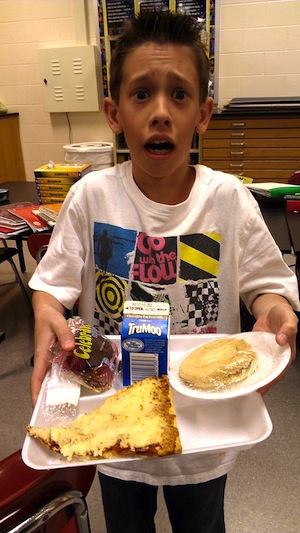
We wanted this group of people to get the most out of it because if you have bad eating habits at a younger age, chances are that your eating habits won’t get any better as an adult. That is, of course, unless the problem is fixed before it starts.
Adding to that, since we are teens and tweens too, we feel concerned for our peers. It is easy to relate with and understand one another. This is helpful in writing an effective post.
Because our target audience is mostly people our age, we make a special effort to keep the posts short and humorous. After all, a normal kid our age wouldn’t want to read a giant, boring article on every harm of sugar.
We also try to keep it simple with big graphics and a #something at the end of every post. These are interesting, fun, and don’t take a long time to read.
In a lot of ways, we are writing #sugarkills for ourselves!
We learn about the dangers of sugar every time we put up a post, and it’s fun just to have an easy writing and graphic project to work on for a couple of days. Then, when your piece gets put on the blog, it feels good to know you are helping other people in the world.
4. What have your results been? What kind of feedback are you getting?
The most important thing we’ve done so far is informing teens and tweens about the amount of sugar in the foods that they are commonly eating.

The main type of social media we are using to get our ideas out is Twitter. Every time a new post goes up, we tweet about it on Mr. Ferriter’s account. We think this is important because Mr. Ferriter has many followers. Most of these followers are teachers, and they might share our posts with their students, which is good because children are the audience that we aim for. Hopefully, our post will be re-tweeted, and more people can learn about the sugar in their foods.
Our results have been encouraging to our group. Last month, we had 1,584 page views. We also have 13 subscriptions and a total of 2,490 page views. People are even leaving requests for certain foods! These we try to fulfill as soon as possible.
At first, not many people were in our #sugarkills group here at school. As we went on and showed how easy it was to contribute, more people joined and more posts started to go up on the blog. We think the blog is growing — and that it will continue to grow for a while.
5. What are you the proudest of? What are your goals for the future?
Our goal for starting #sugarkills was simply to inform people about the sugar in the foods they commonly eat and to help people make better choices. That has been a success from the beginning, and we’re proud of that.
But what makes us even more proud is that we have helped people all around the world with their sugar intake.
A couple weeks ago, Mrs. Swanson left us a comment about how her dad has diabetes and our blog is really helping him. It makes us feel great to know that we’ve made a difference in someone’s life. What if Mrs. Swanson’s father made the decision to say “no” to one candy bar, because of us? Then he would keep making healthier choices, and that could eventually save his life! We would have made a huge difference.
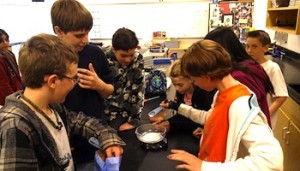
Going forward as a blog, we hope that we will be able not only to inform people about the sugars in their foods but to give them better options; what’s the good of saying that something is terrible without giving an alternative?
For example, we want to have more low sugar foods on our blog and more comparison posts, where we compare two foods and tell readers about the better option. We like these posts because they help people to realize the amount of sugar in their foods and drinks and give them better options all at one time.
6. What do you think you are learning from this project? Is this a good way to spend time in school?
We’re learning to be aware of the things that we put in our body. Our body is a machine that we have to fill with the right fuel.
We’re also learning that kids can be teachers too. For example, a few weeks ago, Mr. Baldasaro mentioned his dream ice cream cone and asked us to figure out how much sugar he was consuming.
Our #sugarkills team drilled it out and told Mr. Baldasaro about his dream cone. Then we gave him a healthier option. It felt great to be able to actually teach an adult instead of adults teaching us, which is usually what happens.
Finally, we are learning that 12-year olds can help people all around the world be more careful with the things that they put in their body. We just like the feeling of being able to be as powerful and influential as adults. It feels amazing to be able to educate people on the dangers of sugar.
In our opinion, this is a great way to spend time in school!
The #Sugarkills Gang operates out of Wake County, North Carolina. Soft drink cup art by Jonathan S. This interview was group edited at Google Docs by gang members. You can read Bill Ferriter’s account of our interview process at his blog.

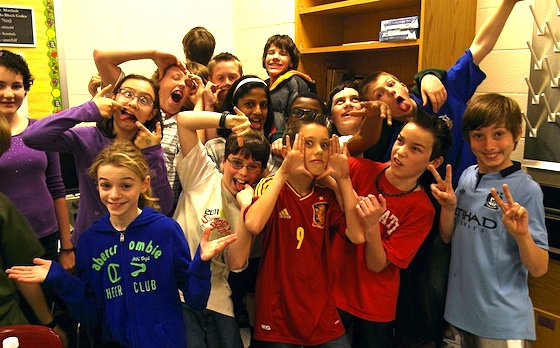


































What would a better choice be? I love coffee creamer. Hazelnut coffee creamer.
Should I choose regular, sugar free or fat free?
I already know less is better, but I don’t want to give it up.